by Aurola Győrfy // Feb. 13, 2024
This article is part of our artist Spotlight Series.
The Hungarian artist duo János Borsos and Lilla Lőrinc have been working together since 2008 under the fictitious artist persona, Borsos Lőrinc. The focus of their collaborative strategy—linking and exploring their artistic identities—has shifted their works from socially critical to self-analytical and self-mythologizing impulses. Their most recent exhibition ‘For the Child of the Future’ at the ArtMill in Budapest can be read as a culmination of their previous desires for community- and world-building, offering a zone where the visitors could engage in a video-game-like interactivity. The installed techno-ritualistic objects in the exhibition served as connection points for evoking visions of the end of the world and making the first steps of world reconstruction.
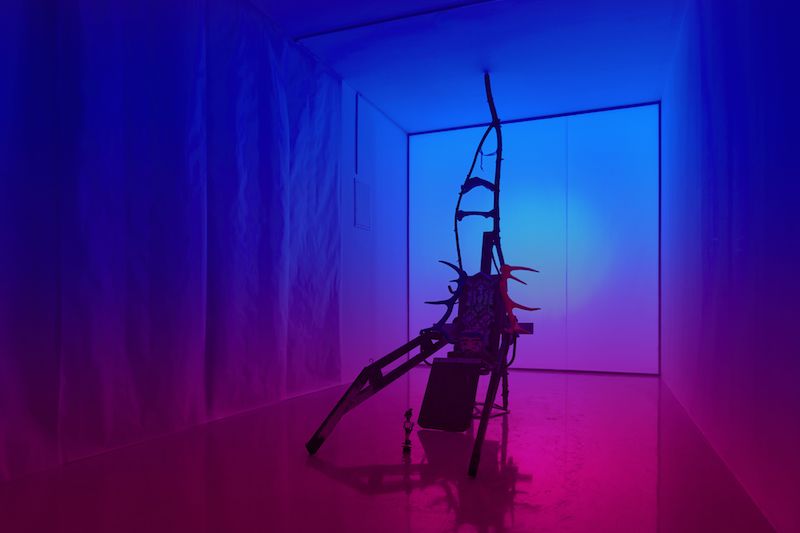
Borsos Lőrinc: ‘For the Child of the Future,’ 2023/24, installation view at ArtMill Budapest // Courtesy of the artists, photo by Dávid Bíró
Their first project together was ‘My Student Loan Debt in Hungarian in HUF’ (2009), a painting showing the amount of their student loan debt—789,279 HUF. In Hungary, before the fall of communism, the art market and patronage were not structured, and the development of commercial galleries only occurred after the turn of the millennium. The economic crisis of 2008 exacerbated the difficulties of finding potential collectors and made communication less transparent between artists and clients. The painting symbolizes this existential fragility and depicts the position of young artists in a precarious socio-economic landscape. With this context in mind, Borsos Lőrinc embodied the ethos of a new wave of artists who bypassed traditional institutions. Remarkably, the painting was sold at its listed value, settling the debt immediately.
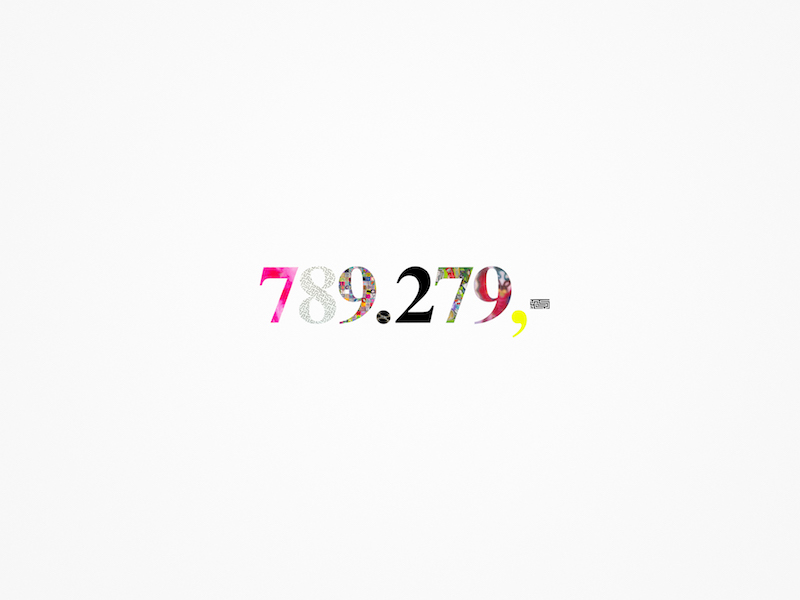
Borsos Lőrinc: ‘My Student Loan Debt in HUF,’ 2008, Esterházy Private Foundation’s Collection // Photo by Miklós Sulyo
Between 2004 and 2010, the artist duo were active members of an evangelical Christian community. To this day, they reflect on this period—analyzing it from a critical perspective, or looking at religious communities and experiences through a more subjective lens. With their work ‘Immovable Land’ (2010) they aimed to put into question the stable, immovable world order built on Hungary’s Christian conservative political system, reflecting on what was, at that time, a chaotic political milieu. A scale model of the Hungarian Parliament, which has a solid metal core, symbolized this stability until a viewer approached, causing the motion-sensored table to vibrate and gradually dismantling the structure. The installation prohibited any renovation, concluding only when the last speck of dust fell from the table.
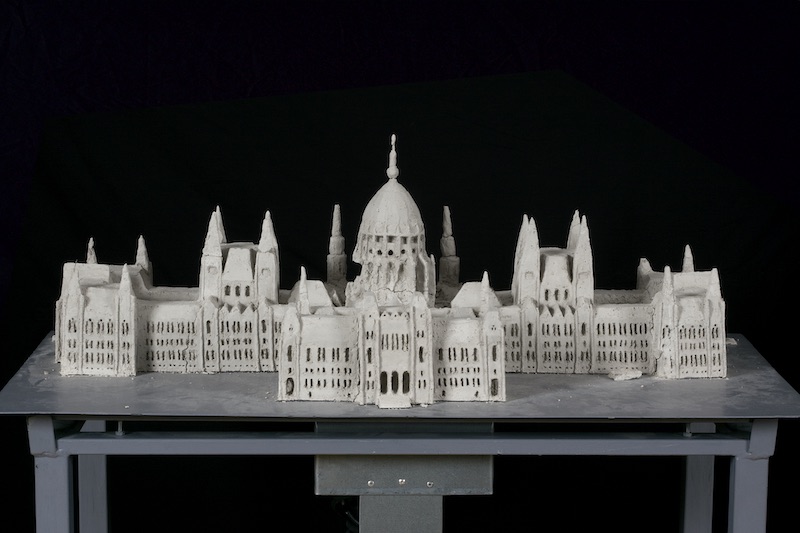
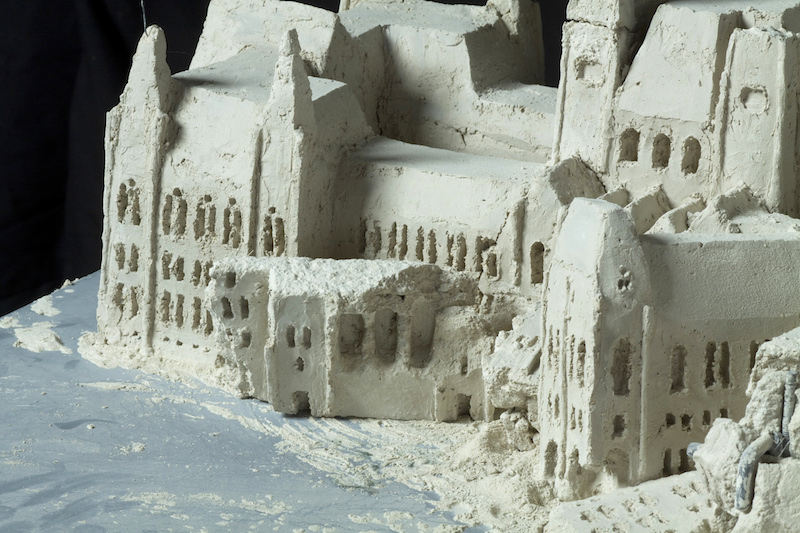
Borsos Lőrinc: ‘Immovable Land,’ 2010, installation | chamotte model of the Hungarian Parliament in 1:300, vibrating table, motion detector | 50x100x130 cm // Photo by Miklós Sulyok
After the period of their socio-critical works, the duo turned towards self-discovery and self-analytical practices. In the project ‘Self-Critical Portrait’ (2016), they revisited the persona of Borsos Lőrinc through a series of paintings. Involving a psychotherapist in their practice, they explored issues of authorship, hierarchy and the dissonance of identity as an artist duo within a private relationship.
One of the defining aspects of Borsos Lőrinc is the constant reconstruction of their identity, activity and artistic aims. In the past 16 years, the fluidity of their practice has redefined the transgressive and underground contemporary art scene of Hungary and Budapest, as well as explored Hungarian political anomalies and sociocultural struggles with a critical attitude. Their collaborative techniques and strategies challenge the white cube-oriented academic atmosphere while blending the boundaries between the electronic music and party scene with contemporary art communities. As they put it: “we aimed to create a gesamtkunstwerk, something that affects all senses and one can become part of it, so we started to organize events and festivals, mostly in the underground techno scene in Budapest.”
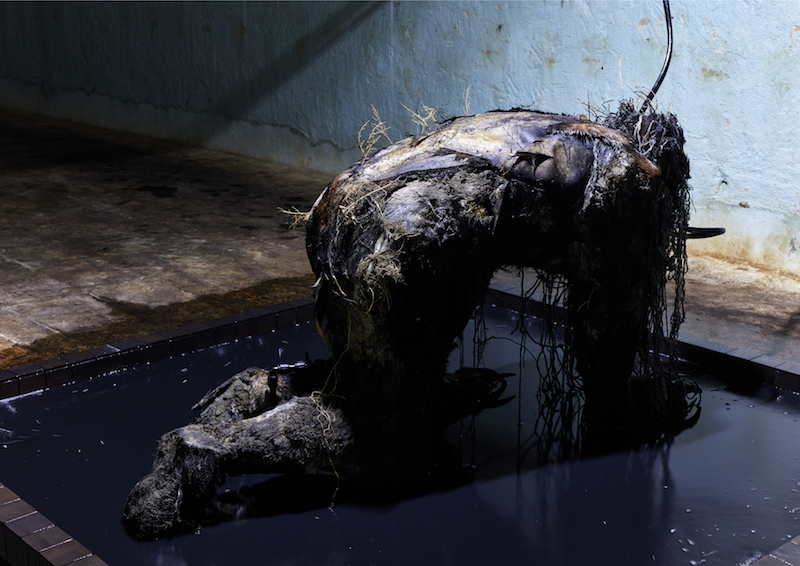
Borsos Lőrinc : ‘Chaos Reigns / A káosz uralkodik,’ 2019-2021 // Technical partner: Zalán Adorján, photo by Dávid Biró
The art quarter budapest (aqb), where the duo has their studio space, is also an exhibition space, music venue and artists’ residency, creating an intersection of nightlife and contemporary art in Budapest. This oscillation reinforces collaborative tendencies and provides a platform for underground and experimental art forms—such as performance, or noise music—that are not as established in the museum setting. This strategy, employed by both the art space and the duo, makes a space for reconceptualizing the virtualized cybernetic body, bringing back the bodily sensations of ecstasy, eroticism and ritual. An example of this is the group exhibition ‘Mine my mind’ (2020) at aqb, in which Borsos Lőrinc’s laser installation ‘Trinity Model’ (2020) transformed the space with industrial noise and flickering red laser lights, engaging visitors in a collaborative audiovisual experience rather than mere spectatorship.
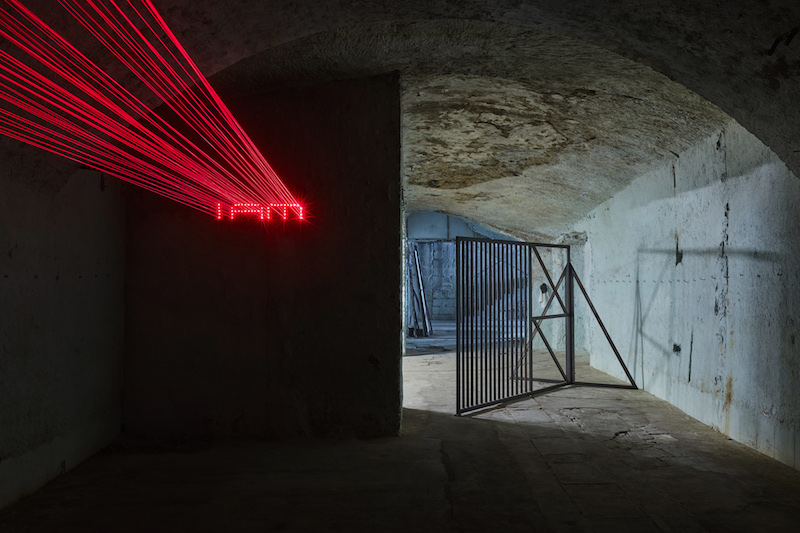
Borsos Lőrinc: ‘Trinity Model,’ 2020, art quarter budapest // Photo by David Bíro
In their recent exhibition ‘For the Child of the Future’ (2023), the space of the museum was divided into two thematic units, an artificial present reminiscent of a techno bunker and a dystopian post-apocalyptic museum space turned inside-out. The interior of the first space was fully covered with black foil, giving the museum the aesthetic of a construction site, while the second part appeared as a deconstructed white cube, where the walls of museums were crumbling. In the practice of Borsos Lőrinc, industrial black enamel paint plays a significant role: it absorbs and reflects light, and embodies the metaphysical void while invoking metaphorical themes of the self and the exploration of the presence of absence.
The pair explained how the aesthetic of this show is in line with their interest in the underground music scene: “since 2000, we have been active in both the visual arts and the nightlife scene, with small breaks and different formations, intending to blur the boundaries between them. We have tried to capture the dialectic of this within a single exhibition, united by a common installation, the scaffolding of construction, which penetrates the spaces above each other, and organizes the atmospheres created along different aesthetics into a narrative.”
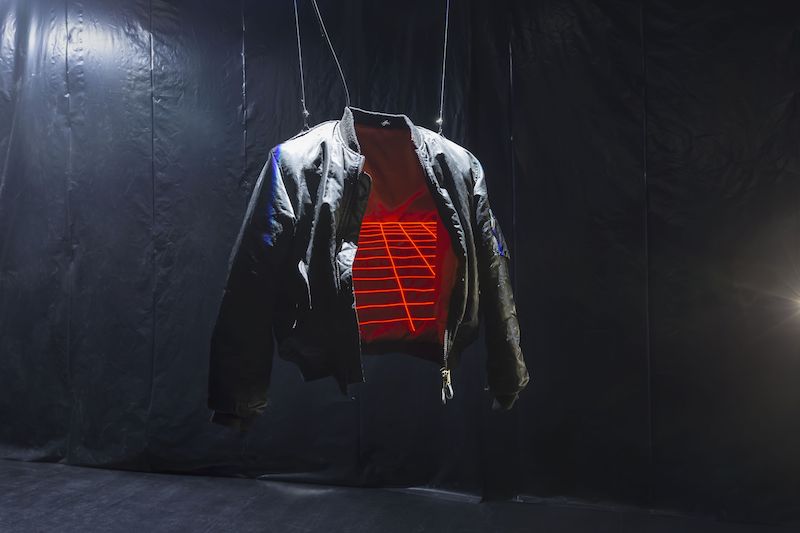
Borsos Lőrinc: ‘For the Child of the Future,’ 2023/24, installation view at ArtMill Budapest // Courtesy of the artists, photo by Dávid Bíró
The works on view—the costumes and props left behind as if from a techno party, or the labyrinth-like installation space—help both to uncover the rules of an unknown ritual while also representing mementos of the coming age, in which technological and biological evolution is secondary, and could be replaced by participatory role-playing. The task of their video-game characters is to preserve and reconstruct the ritual based on the information left behind. Thus, we can read the objects as codes that need to be cracked to continue our journey in the exhibition, as well as the practice of Borsos Lőrinc. They elaborate on their interest in gaming aesthetics: “The reason why we like the artistic practice of computer games is that by working in a community and building alternative realities, life itself becomes a game, while self-expression, experimentation with materials and the pursuit of total freedom, are also practiced.”
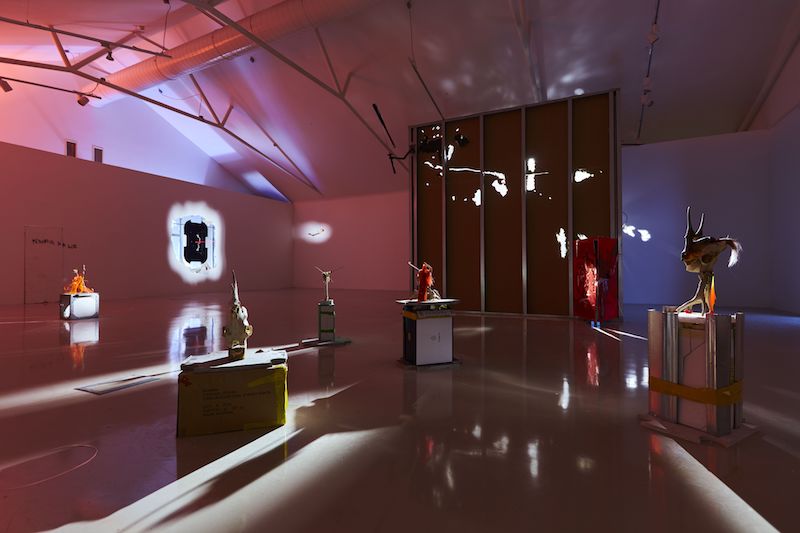
Borsos Lőrinc: ‘For the Child of the Future,’ 2023/24, installation view at ArtMill Budapest // Courtesy of the artists, photo by Balázs Deim
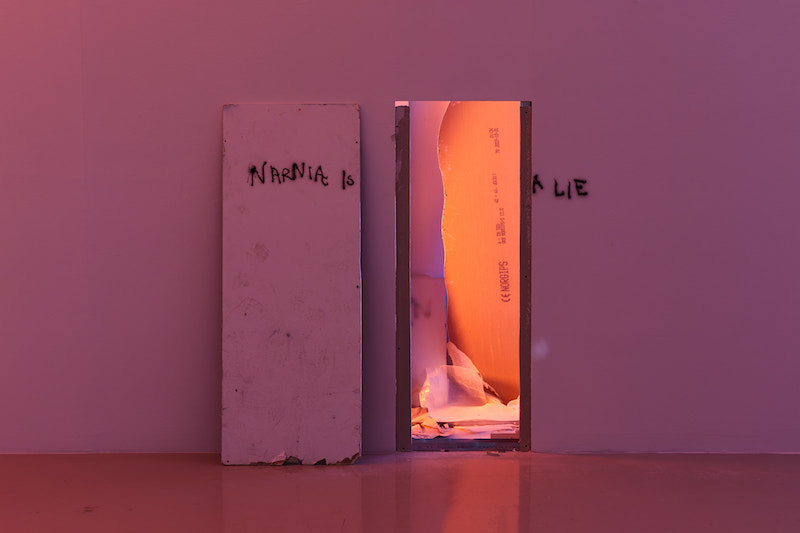
Borsos Lőrinc: ‘For the Child of the Future,’ 2023/24, installation view at ArtMill Budapest // Courtesy of the artists, photo by Dávid Bíró
The post-apocalyptic world-building strategy and the exploration of video-game-like spaces set the idea of role-playing in generated simulacra and alternative artificial realities in motion. This techno-futuristic reality that they hope to unveil might be divisive, regarding the topic of technological singularity and contemporary art, through which they question the holy trinity of the artist, the art piece and the viewer. In the practice of Borsos Lőrinc becoming friends with the uncanny nature of technology, and experimenting with alternative pathways to human existence, is a central and recurring theme.
The duo is busy this year, with an exhibition opening at the Hessel Museum in New York in April and the imminent release of János Borsos’ (aka Mike Nylons) new album with the Hungarian experimental electronic music label, Temporary Nights.






















